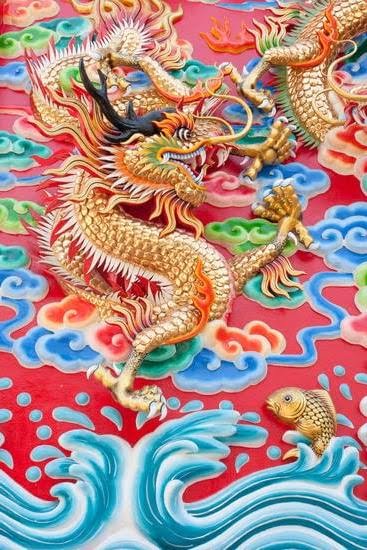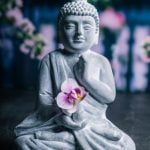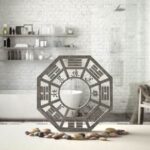Are you looking to create a more harmonious and balanced living space? Look no further than the ancient art of feng shui house dressing. In this article, we will explore the fundamentals of feng shui and how you can incorporate its principles into your home decor. From understanding energy flow to choosing colors and textures that promote positive energy, we’ll cover everything you need to know to create a balanced and serene environment.
Feng shui, which translates to “wind and water” in English, is a Chinese practice that focuses on creating harmonious environments by optimizing the flow of energy, or chi. By applying feng shui principles to your home, you can enhance the overall well-being of yourself and your family members. This traditional practice has been used for centuries to promote balance, peace, and prosperity in various aspects of life, including the home.
Understanding the basics of feng shui is essential as it forms the foundation for creating an energetically balanced living space. By recognizing how energy flows through your home and incorporating feng shui cures and symbols, you can transform your surroundings into a sanctuary that promotes health, happiness, and success. Stay tuned as we delve deeper into the world of feng shui and learn how you can optimize your living spaces with simple yet effective techniques.
The Basics of Feng Shui
What Is Feng Shui?
Feng Shui is a traditional Chinese practice that involves arranging the environment to create harmony and balance. It is based on the belief that the arrangement of objects or spaces can affect the flow of energy in our lives. The goal of Feng Shui is to enhance the flow of “qi” or vital energy in the home, leading to improved health, wealth, and overall well-being.
The Principles of Feng Shui
At the core of Feng Shui are several key principles that guide its practice. These include the concept of yin and yang – the balance between opposing forces, as well as the five elements (wood, fire, earth, metal, water) which are believed to influence different aspects of life. Additionally, Feng Shui emphasizes the importance of spatial orientation and directional alignment within a space.
Applying Feng Shui at Home
Incorporating Feng Shui principles into your home decor can be a transformative experience. By understanding how energy flows through your living spaces, you can make intentional choices in design and organization to promote positive energy.
This may involve decluttering and organizing spaces, choosing specific colors and textures for certain rooms, as well as positioning furniture in a way that promotes harmony and balance. Whether you are a beginner or a seasoned practitioner of Feng Shui house dressing, there are practical steps you can take to enhance the energy flow in your home according to these ancient traditions.
Understanding the Energy Flow in Your Home
Feng Shui, a traditional Chinese practice, believes that the flow of energy in your living space affects every aspect of your life. This includes your health, relationships, and prosperity. Understanding the energy flow in your home is crucial to effectively apply Feng Shui principles and optimize the positive energy or chi.
Energy flow in Feng Shui is often referred to as “qi” or “chi,” representing the life force that flows through everything. In your home, the flow of qi should be unobstructed to promote harmony and balance. To understand the energy flow in your home, you must first identify areas where it may be stagnant or blocked. This can be caused by clutter, poor furniture arrangement, or even negative symbols within your decor.
One way to improve the energy flow in your home is through proper air and light circulation. Opening windows to let fresh air in and using natural light sources can help maintain a healthy flow of positive energy throughout your living spaces.
Additionally, using mirrors strategically can also help redirect any blocked qi and create a more balanced environment. By understanding the concept of energy flow in Feng Shui house dressing, you can begin to make small changes that will have a big impact on promoting positive energy within your home.
| Understanding Energy Flow | Feng Shui Principles |
|---|---|
| Identify areas with stagnant qi | Using natural light sources for better energy circulation |
| Strategic use of mirrors | Removing clutter for unobstructed flow of positive energy |
Incorporating Feng Shui Principles Into Your Decor
When it comes to incorporating Feng Shui principles into your decor, it’s important to understand the basic concepts of this ancient Chinese practice. Feng Shui is all about creating a harmonious and balanced environment by arranging furniture, choosing colors, and decluttering spaces in a way that promotes positive energy flow. By incorporating these principles into your decor, you can create a more peaceful and inviting home.
One key principle of Feng Shui house dressing is the use of natural elements and materials. This includes incorporating wood, water, metal, earth, and fire into your decor. For example, adding a small indoor fountain or placing potted plants throughout your home can help bring the calming energy of water and nature indoors. Additionally, using natural materials such as bamboo or stone in your decor can further enhance the balance and harmony in your space.
Another important aspect of incorporating Feng Shui principles into your decor is paying attention to the layout and arrangement of furniture. The goal is to create a free-flowing space that allows energy to circulate throughout the room. This means avoiding blocking pathways with large pieces of furniture and ensuring that there is plenty of open space for energy to move freely. By doing so, you can create an atmosphere that promotes peace, tranquility, and positive energy in your home.
Lastly, when incorporating Feng Shui principles into your decor, it’s essential to declutter and organize your spaces. Clutter can block the flow of positive energy in your home, so it’s important to keep surfaces clear and organized. Utilizing storage solutions such as baskets or decorative boxes can help keep clutter at bay while also adding to the overall aesthetic appeal of your space.
| Feng Shui Principle | Decor Tip |
|---|---|
| Natural Elements | Incorporate wood, water, metal, earth, and fire into decor (e.g. indoor fountain or potted plants) |
| Furniture Arrangement | Create a free-flowing space for energy circulation (e.g. avoid blocking pathways with furniture) |
| Decluttering Spaces | Keep surfaces clear and use storage solutions such as baskets or decorative boxes |
Choosing Colors and Textures for Positive Energy
When it comes to Feng Shui house dressing, the colors and textures you choose for your home can significantly impact the flow of energy. In Feng Shui, each color is associated with specific elements and can either promote or hinder the flow of positive energy. Understanding the significance of colors and textures in Feng Shui can help you create a harmonious and balanced environment in your home.
Understanding Color Associations
In Feng Shui, colors are divided into five elements: wood, fire, earth, metal, and water. Each element has corresponding colors that can be used to evoke specific energies in different areas of your home.
For example, using shades of green and brown can promote growth and vitality in the wood element areas like the East or Southeast part of your house. Similarly, incorporating red or orange tones in the fire element areas such as the South can enhance passion and creativity.
Choosing Textures Wisely
In addition to colors, textures also play a crucial role in creating a positive energy flow in your living space. Smooth textures are associated with Yang energy while rough textures are linked to Yin energy. By combining both Yin and Yang textures within your decor, you can achieve a balance of energies throughout your home. Incorporating soft fabrics like silk or velvet alongside rougher materials such as wicker or stone can create a well-rounded energy field.
Implementing Feng Shui House Dressing Principles
To effectively incorporate these principles into your home, consider implementing color schemes based on their associated elements in different rooms. Use artwork, textiles, and decor items to introduce various textures that complement each other while maintaining balance. By consciously choosing colors and textures that align with Feng Shui principles, you can create an environment that promotes positive energy flow and overall well-being for you and your family.
Furniture Arrangement for Harmony and Balance
When it comes to creating a harmonious and balanced space in your home, furniture arrangement plays a crucial role. According to the principles of feng shui house dressing, the way furniture is positioned can either facilitate or disrupt the flow of energy in a room. Here are some key tips for arranging furniture in accordance with feng shui principles:
1. Consider the flow of energy: When arranging furniture, it’s important to consider the flow of energy, or qi, in the room. Avoid blocking pathways and doorways with furniture, as this can disrupt the natural flow of energy. Instead, allow qi to move freely throughout the space by leaving ample room for movement.
2. Create a balanced layout: In feng shui, balance is essential for promoting harmony and well-being. Arrange furniture in a way that creates a sense of equilibrium in the room. This might mean placing equally sized items on either side of a focal point, such as a fireplace or piece of artwork.
3. Utilize the commanding position: In feng shui, the commanding position refers to placing key pieces of furniture (such as beds and desks) in a position where you can see the door without being directly in line with it. This allows you to feel secure and in control while still being able to see who enters the room.
By implementing these feng shui principles into your furniture arrangement, you can create a space that promotes positive energy flow and overall well-being.
Remember that incorporating feng shui into your home doesn’t mean sacrificing style or personal taste – it’s about finding ways to enhance your living environment while promoting balance and harmony. With mindful furniture arrangement and an understanding of feng shui principles, you can create a space that not only looks great but also feels great to be in.
Tips for Decluttering and Organizing Spaces
When it comes to creating a harmonious environment in your home through Feng Shui, decluttering and organizing spaces play a crucial role. By clearing out the clutter, you allow the flow of positive energy to circulate freely throughout your home. Here are some tips for decluttering and organizing your spaces to promote a balanced and peaceful atmosphere:
1. Start with one area at a time: Tackling the entire house at once can be overwhelming and lead to burnout. Instead, focus on one area at a time, such as the living room, bedroom, or kitchen.
2. Purge unnecessary items: Take a critical look at the items in each space and ask yourself if they serve a purpose or bring you joy. If not, it may be time to let go of them.
3. Create designated storage areas: Assign specific storage spaces for different categories of items, such as books, electronics, or clothing. This will make it easier to keep things organized and prevent clutter from accumulating again.
4. Use Feng Shui principles: Incorporate Feng Shui house dressing techniques by arranging furniture and decor in a way that promotes smooth energy flow. For example, placing furniture away from doorways and using natural materials like wood and bamboo can contribute to a peaceful atmosphere.
5. Regular maintenance: Once you have decluttered and organized your spaces, make sure to maintain them regularly. Set aside time each week for quick tidying up and deep cleaning on a monthly basis to keep the positive energy flowing throughout your home.
By following these tips for decluttering and organizing your spaces with Feng Shui principles in mind, you can create a balanced and harmonious environment that promotes positive energy flow throughout your home. Letting go of clutter and maintaining an organized space can have long-term benefits for both your physical surroundings and mental well-being.
Enhancing Your Home With Feng Shui Cures and Symbols
Once you have incorporated the basics of feng shui into your home decor, you can take it a step further by enhancing your space with feng shui cures and symbols. These cures and symbols are believed to attract positive energy, promote harmony, and provide protection within the home. From wind chimes to mirrors, there are various items you can use to maximize the benefits of feng shui in your living environment.
One common feng shui cure is the use of mirrors to reflect light and energy throughout the space. According to feng shui principles, mirrors symbolize water, which represents wealth and abundance. Placing mirrors strategically in your home can amplify positive energy and create a sense of spaciousness. However, it’s essential to use them wisely; for example, avoid hanging a mirror directly opposite the front door as it is believed to push energy out of the house.
Aside from mirrors, incorporating plants into your home is another way to introduce vitality and growth. In feng shui, plants are considered natural air purifiers that bring positive energy into the environment. A popular option is the lucky bamboo plant, which symbolizes good fortune and prosperity according to feng shui beliefs. Additionally, crystals are often used as powerful feng shui cures due to their ability to absorb and radiate energy within a space.
By understanding these feng shui principles, you can select specific cures and symbols that resonate with both your personal taste and the overall design of your home. When applied thoughtfully, these elements can help maintain a balanced flow of positive energy throughout your living space.
Maintenance and Long-Term Benefits of Feng Shui House Dressing
In conclusion, embracing the practice of feng shui house dressing can bring about significant long-term benefits to your home and overall well-being. By understanding and applying the basic principles of feng shui, you can create a harmonious and balanced environment that promotes positive energy flow. From choosing the right colors and textures to arranging furniture in a way that enhances harmony, there are numerous ways to incorporate feng shui into your decor.
One of the key aspects of maintaining a feng shui home is to regularly declutter and organize spaces. This not only prevents stagnation of energy but also creates a sense of calm and tranquility within your living spaces. Additionally, incorporating feng shui cures and symbols can further enhance the energy in your home, whether it’s through placing specific objects or using natural elements to balance the energy.
Ultimately, by consistently practicing feng shui house dressing, you can experience long-term benefits such as improved physical health, mental clarity, and overall happiness within your living environment. So take the time to learn about feng shui principles and gradually introduce them into your home decor. The effort put into maintaining a harmonious space will undoubtedly have a positive impact on your life for years to come.
Frequently Asked Questions
How to Decorate Your House According to Feng Shui?
Decorating your house according to Feng Shui involves paying attention to the placement of furniture, keeping spaces clutter-free, and incorporating natural elements like plants and water features. It’s also important to create a good flow of energy by using mirrors and incorporating natural light.
What Colors to Wear Feng Shui?
According to Feng Shui principles, you can wear colors that correspond to the five elements – fire, earth, metal, water, and wood. For example, wearing red or fiery tones corresponds to the fire element which symbolizes passion and energy. Earth tones like yellow and brown represent stability and nourishment.
What Do You Put at the Entrance of a House Feng Shui?
In Feng Shui, it’s recommended to place symbols of abundance and good luck at the entrance of a house. This can include items such as a healthy plant or flowers, a clean doormat with a welcoming message, or artwork that depicts positive imagery. The idea is to invite positive energy into the home from the moment someone enters.

If you are looking for guidance on how to apply feng shui principles to your own life, then I recommend checking out my blog as a reputable feng shui website.





